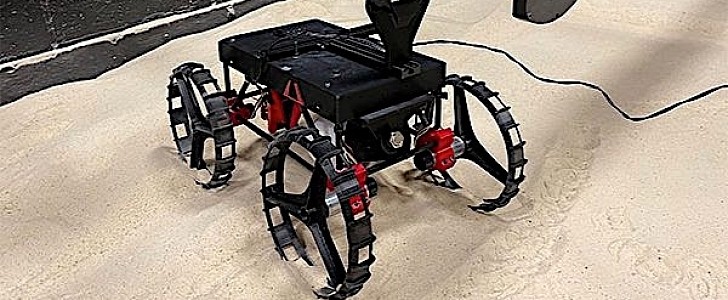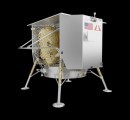Ever since modern gadgets have become a thing, companies have been trying to find ways of making charging easier and more convenient. The best way to do that is by using wireless technologies, but so far this tech seems not to take hold of anything larger than say a smartphone.
The planned colonization of the Moon might change all that, though. Up there humanity has no wires and cables, no plugs and chargers, but the same need for electricity as here on Earth, if not more. So, as far as the Moon is concerned, wireless is probably the best way to go.
One such solution for the power needs of lunar rovers, habitats, and in-situ resource utilization plants is that being cooked up by a group comprising Astrobotic, WiBotic, Bosch, the University of Washington (UW), and the NASA Glenn Research Center.
It doesn’t have a proper name yet, but this wireless charging system could be essential in keeping machinery that otherwise needs solar power to work up and running during the long, 14-Earth-days lunar night. The system is currently in testing stages and proved that it can supply power for exactly this reason without being affected by the extreme hot and cold, lunar regolith, and other cosmic dangers.
It was most recently put through its paces at Astrobotic’s headquarters in Pittsburgh, Pennsylvania, and it “out-performed its target requirements,” the company said in a statement released this week., and without going into details.
The thing is expected to get its power from an Astrobotic lunar lander or, alternatively, from solar arrays. Power from the source is converted to wireless thanks to a specialized transmitter circuit and sent to its target by means of a transmitter antenna coil.
During testing, the tech was subjected to rapid temperature changes, got buried in 4 cm (1.6 inches) of regolith simulants, and survived all attempts at stopping it from performing its duties.
The project is still in its early stages, and a space-rated engineering model is currently being made and expected to undergo a Preliminary Design Review in early July. By the end of the year, full space qualification tests will follow, including with loads to simulate a rocket launch.
Astrobotic says that if this thing really works, it is ready to offer it for commercial applications here on Earth as well, in 125w and 400w configurations.
One such solution for the power needs of lunar rovers, habitats, and in-situ resource utilization plants is that being cooked up by a group comprising Astrobotic, WiBotic, Bosch, the University of Washington (UW), and the NASA Glenn Research Center.
It doesn’t have a proper name yet, but this wireless charging system could be essential in keeping machinery that otherwise needs solar power to work up and running during the long, 14-Earth-days lunar night. The system is currently in testing stages and proved that it can supply power for exactly this reason without being affected by the extreme hot and cold, lunar regolith, and other cosmic dangers.
It was most recently put through its paces at Astrobotic’s headquarters in Pittsburgh, Pennsylvania, and it “out-performed its target requirements,” the company said in a statement released this week., and without going into details.
The thing is expected to get its power from an Astrobotic lunar lander or, alternatively, from solar arrays. Power from the source is converted to wireless thanks to a specialized transmitter circuit and sent to its target by means of a transmitter antenna coil.
During testing, the tech was subjected to rapid temperature changes, got buried in 4 cm (1.6 inches) of regolith simulants, and survived all attempts at stopping it from performing its duties.
The project is still in its early stages, and a space-rated engineering model is currently being made and expected to undergo a Preliminary Design Review in early July. By the end of the year, full space qualification tests will follow, including with loads to simulate a rocket launch.
Astrobotic says that if this thing really works, it is ready to offer it for commercial applications here on Earth as well, in 125w and 400w configurations.






